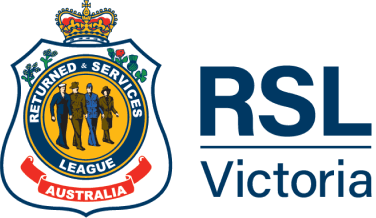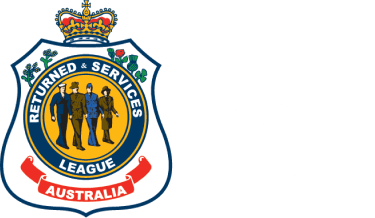In 2023, Australians commemorated more than 80 years since some of the biggest battles and most tragic events from the Pacific war. Japan’s entry into the war, with its attack on Pearl Harbor on December 7, 1941, dramatically altered the Second World War for Australia in a deadly and defining way.
The first year of the Pacific war saw fighting along the Kokoda Track and on the northern beachheads in New Guinea. Australian servicemen were massacred on the islands of New Britain and Ambon and in Malaya, while twenty-one Australian nurses were massacred on Banka Island. The fall of Singapore saw more than 14,000 Australians captured and made prisoners of war. Australia itself became an actual theatre of war.
It would only be after the end of hostilities in August 1945 that the ramifications of the events of 1942 would be fully realised. Of the more than 30,000 Australian service personnel that died in the Second World War, half were lost in the war against Japan. One-third or 8,031 of the more than 22,000 Australians who became prisoners of the Japanese died in captivity.
What, then, of the dead of the Pacific war? Between the loss of so many Australian lives and the beautiful, peaceful war cemeteries we see dotted around the Pacific today, there is a story missing from the narrative on Australia’s wartime experience in the Pacific.

Unknown is the band of men whose role it was in the Pacific War to care for the dead, 80 years after their role in the war began.
A formal response to dealing with the dead originated in the First World War with the establishment of the Imperial (now Commonwealth) War Graves Commission. Changing attitudes toward the dead of war and the sheer scale of the First World War saw a shift in caring for the dead.
The Commission’s goal was to commemorate the fallen in perpetuity, with each casualty afforded a headstone or memorial, permanent and uniform in nature, and equal in treatment ‘irrespective of rank or religion,’ according to the Commission.
This policy of commemoration continued into the Second World War, the Commission wishing for uniformity in policy for the dead of both world wars.
Though an Australian war graves unit was sent to the Middle East as a result of war again being declared in September 1939, Japan’s entry into the war meant the role of Australia’s war graves units would change dramatically.
The Pacific war brought with it a new set of complexities and challenges unique to this region. Though the dead of this war were thankfully far less than that of World War One, the nature of the Pacific war itself meant that Australia’s dead were scattered across a wider area, in areas often difficult to access, and difficult to locate due to the nature of the jungle, climate and terrain.
It was early 1942 when the first Australian war graves unit was sent to Port Moresby, dealing with the dead there establishing what would become Port Moresby (Bomana) War Cemetery. In New Guinea, it was the ability of war graves units to have relatively rapid access to the dead that resulted in fewer who remained missing than might otherwise have been. Time would prove an important factor in the search for the dead.
This was aided by fighting units burying their own dead as the fighting subsided or moved on. Battlefield burials were required to be carried out by men from their own unit where possible. Instructions were provided on the correct identification and registration of the dead, and for carrying out field burials for both our own and enemy dead.
The impact on the men of burying their mates would be unimaginable to the rest of us. Robert Froome recalled, ‘It would totally upset you but you knew that you couldn’t alter the situation, you just had to get on with it.’
As war graves units moved into particular areas, they were responsible for searching for and bringing in the dead from field graves, often to temporary war cemeteries used throughout the region. At Milne Bay in September 1942, the 2/2 Australian Graves Registration and Enquiry Unit appears to be the first war graves unit in the field in New Guinea to follow close behind active operations
It wasn’t until August 1943 before 17 Australian Graves Registration and Enquiry Unit became the first war graves units to access the dead along the Kokoda Track. Spending four weeks along the track, temporary war cemeteries were surveyed, particulars of the dead were checked, and temporary grave markers maintained.
Repeated searches were also made of those still missing, often without success. Around Brigade Hill, this unit conducted ‘a great deal of searching and consequently had to spend considerable time in the area, searched all tracks and gullies.’ Repeated searches were made at Isurava for remains, including that of Private Bruce Kingsbury VC, with ‘searches proving fruitless’ at the time. Kingsbury’s remains were later found and buried at Bomana War Cemetery.2
When the three main permanent war cemeteries of Port Moresby (Bomana), Lae, and Bita Paka (Rabaul) War Cemeteries were decided on toward the end of the war, temporary cemeteries were consolidated by war graves units into these main cemeteries.
In other areas, accessing the dead was delayed by the Japanese occupation: not until after war’s end could the search for the dead could begin. It was an immense task. Prisoners who had died in captivity at places such as Ambon and along the Sandakan death march tracks had little or no record of their death or burial. Eyewitnesses became a vital link to the dead.
In North Borneo, one war graves unit diary recorded, ‘I was shown the cells where they had been kept and examined them minutely in the hope that (sic) would have left marks of their identification behind unfortunately nothing was found.’3
It’s difficult for us to imagine carrying out such a grim task, nor carrying in silence the burden of that experience in the decades since. Theirs was an experience few wanted to discuss, and fewer still would care to know about.
This gruesome yet necessary wartime service and the men who performed it have remained on the periphery of our knowledge of Australia’s wartime history. But those whose loved ones have war graves, and those whose loved ones were never found but are memorialised in war cemeteries around the Pacific, have the men of Australia’s war graves units to thank for their efforts.
It has been 80 years since these men put sensitivities aside to begin the task of not simply caring for the dead but honouring them in perpetuity. These men are our unsung heroes of remembrance.
About the writer
Lisa Cooper is a writer and historian, and a Research Fellow at Deakin University. Lisa recently completed her PhD at Deakin University titled A ‘most heartbreaking job’: caring for the dead of Australia’s war against Japan.

